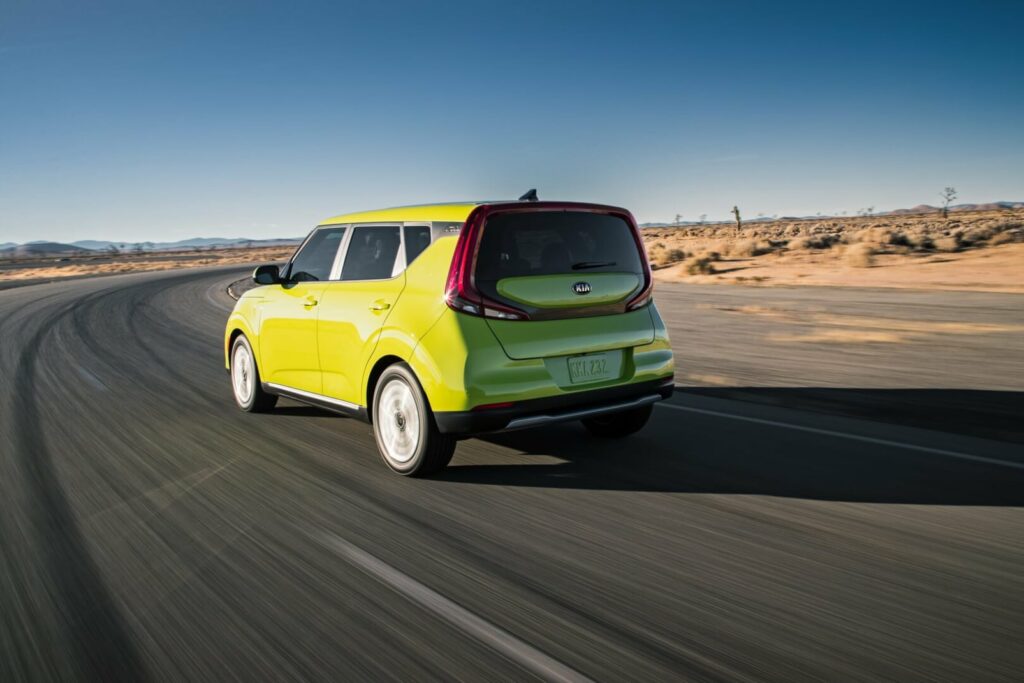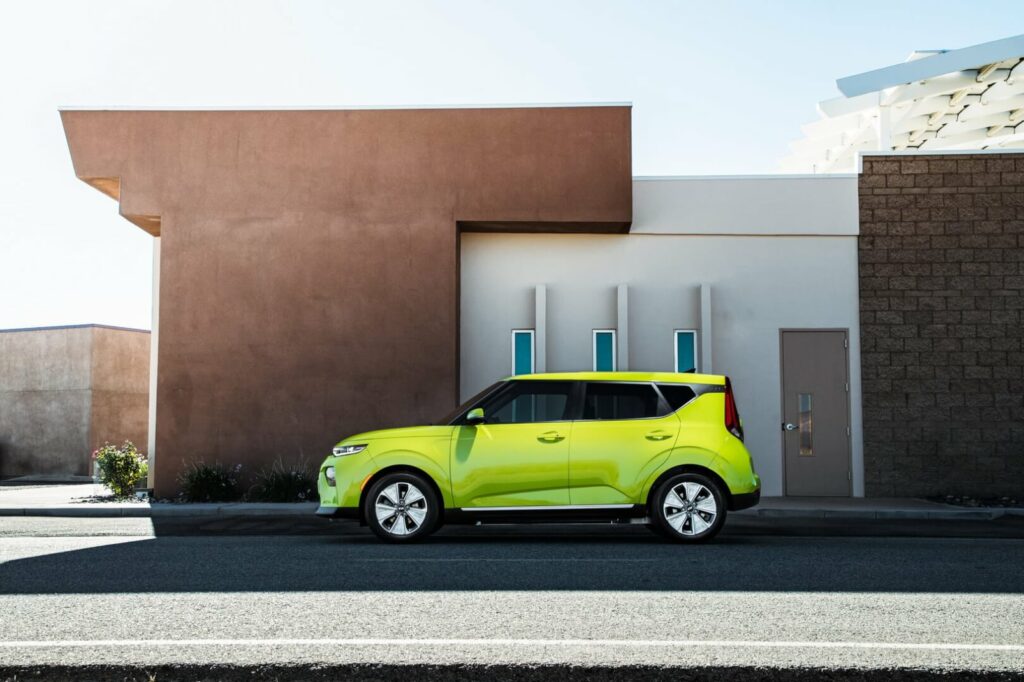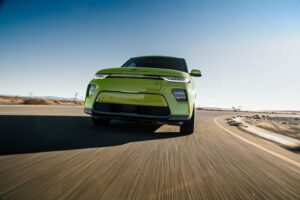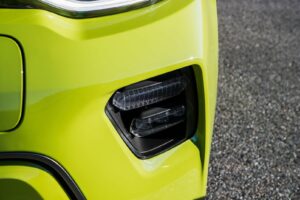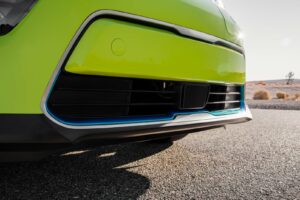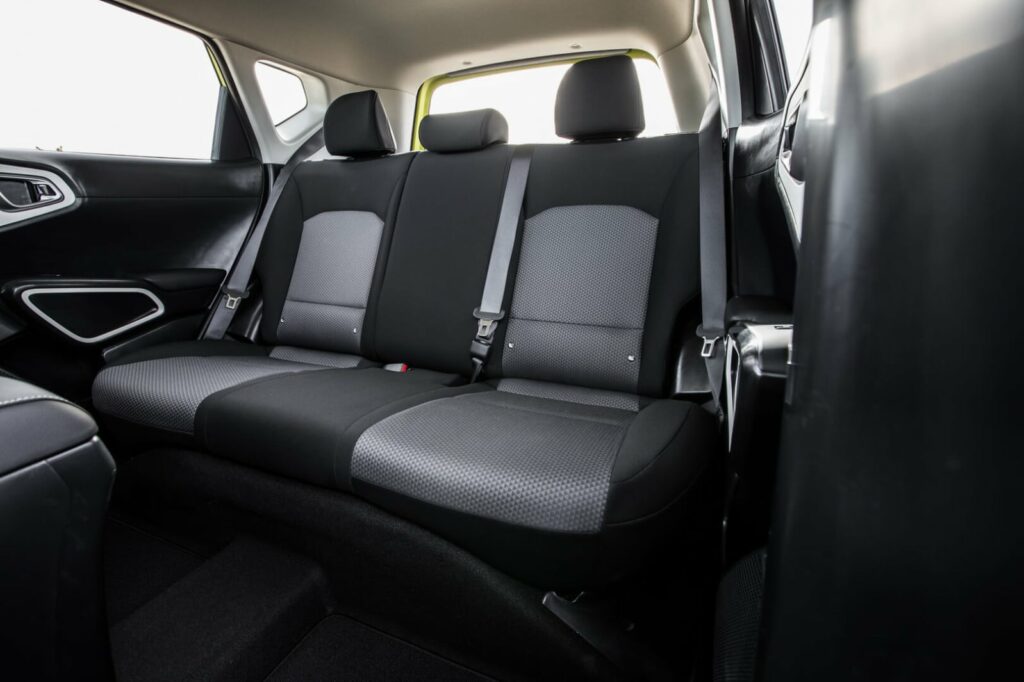The Kia e-Soul is the second generation of the electric car, which made its debut at the 2018 Los Angeles Auto Show. Compared to the previous version, the electric car has changed significantly, both externally and internally, changed its technical characteristics, and became more technologically advanced and safer.

The Kia e-Soul is powered by a 201 horsepower, 395 N⋅m electric motor powered by a 64 kW⋅h battery with a liquid thermal management system. The electric car has an EPA-standard range of 418 km. The maximum speed of the electric car is 167 km/h and the acceleration time from 0 to 100 km/h is 7.6 seconds.
The new electric car maker has abandoned the previous CHAdeMO charging standard, so the new Kia e-Soul features a combined charging system CCS, which allows the electric car to charge from household networks and from fast charging stations with a capacity of 100 kW.

Externally, the electric car has retained its traditional “angular” look and has remained recognizable. Although in many ways it has undergone significant changes that can’t be called a simple restyling.
The design of the front of the electric car has changed dramatically, instead of huge headlights, the electric car got narrow front optics, which are visually connected by a strip, in the place where there used to be a closed radiator grille. Also in the front end, the bumper and the shape and layout of the fog lights have changed.
The stern of the electric car has changed even more thoroughly, here completely changed the format of the rear lights and now they frame half of the trunk, instead of being located as before only on the body pillars.
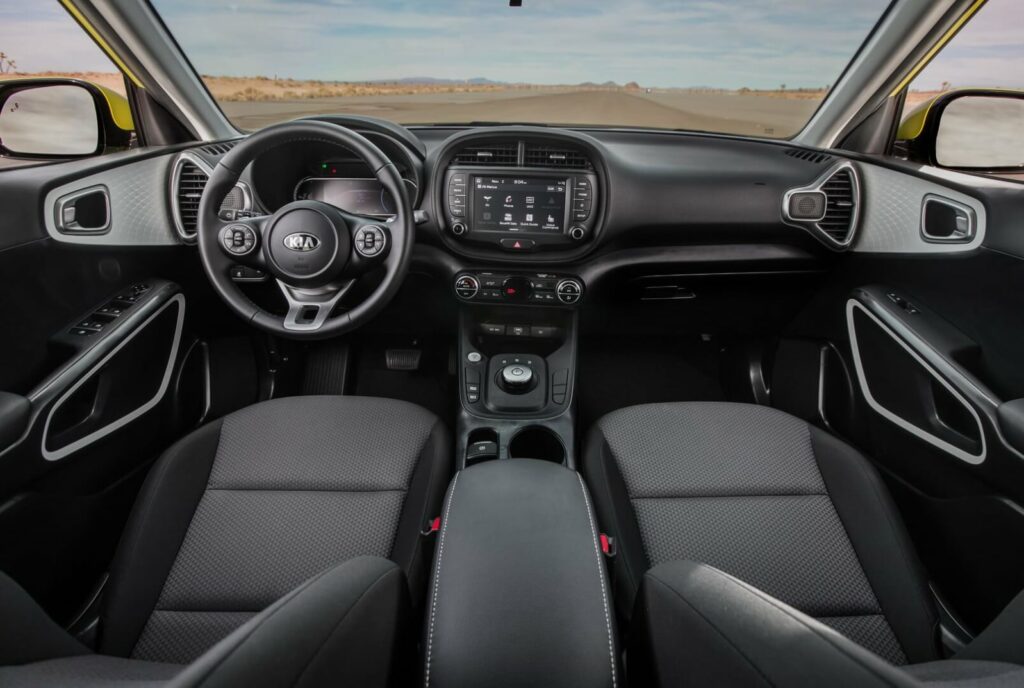
Another feature of the exterior is the side bumpers on the body, which are probably made to improve the aerodynamics of the electric car.
Visually a lot has also changed inside, but if we look closer, it seems that changes are not so cardinal and more expressed in the detailing of controls. So, for example, the gear lever was replaced by the joystick, the interface of the dashboard was changed, and the elements of climate system control were changed.

Kia e-Soul has four driving modes: Eco, Comfort, Sport, and Eco +, which automatically adjust the engine traction, regenerative braking, air conditioning, and heating settings, and also set speed limits to more effectively manage the transmission depending on driving conditions.
The Kia e-Soul gets a multimedia system with a 10-inch touchscreen display, a rearview camera, Apple CarPlay and Android Auto, a six-speaker sound system, Bluetooth, and USB ports.
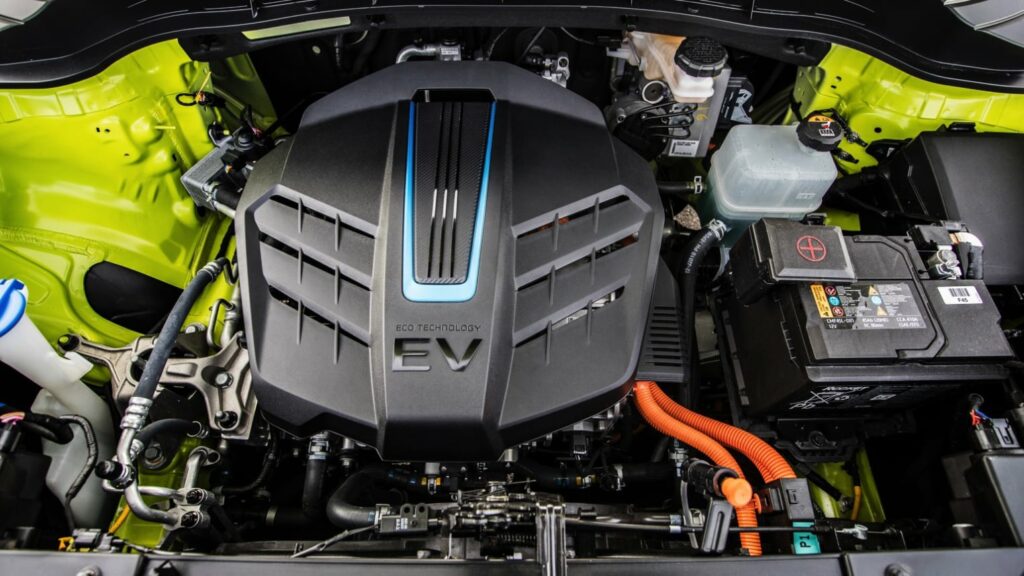
The safety system includes a standard set of passive safety features and a host of active driver assistants such as automatic braking, lane control, and holding, and cruise control with automatic vehicle stop and resume.
The electric car has received the UVO remote control system, which informs the owner about the state of charge, saves the route in the navigator, and allows them to contact the rescue services.
| Performance | |
| Acceleration 0 – 100 km/h | 9.9 sec |
| Top Speed | 157 km/h |
| Electric Range | 230 km |
| Total Power | 100 kW (136 PS) |
| Total Torque | 395 Nm |
| Drive | Front |
| Battery and Charging | |
| Battery Capacity * | 42.0 kWh |
| Battery Useable | 39.2 kWh |
| Europe | |
| Charge Port | Type 2 |
| Port Location | Front – Left |
| Charge Power | 7.2 kW AC |
| Charge Time (0->230 km) | 6h30m |
| Charge Speed | 36 km/h |
| Fastcharge Port | CCS |
| FC Port Location | Front – Left |
| Fastcharge Power (max) | 50 kW DC |
| Fastcharge Time (23->184 km) | 43 min |
| Fastcharge Speed | 220 km/h |
| Energy Consumption | |
| EVDB Real Range | |
| Range | 230 km |
| Vehicle Consumption | 170 Wh/km |
| CO2 Emissions | 0 g/km |
| Vehicle Fuel Equivalent | 1.9 l/100km |
| WLTP Ratings | |
| Range | 276 km |
| Rated Consumption | 156 Wh/km |
| Vehicle Consumption | 142 Wh/km |
| CO2 Emissions | 0 g/km |
| Rated Fuel Equivalent | 1.8 l/100km |
| Vehicle Fuel Equivalent | 1.6 l/100km |
|
Rated = official figures as published by manufacturer. Rated consumption and fuel equivalency figures include charging losses.
|
|
|
Vehicle = calculated battery energy consumption used by the vehicle for propulsion and on-board systems.
|
|
| Real Energy Consumption between 112 – 245 Wh/km | |
| City – Cold Weather | 170 Wh/km |
| Highway – Cold Weather | 245 Wh/km |
| Combined – Cold Weather | 201 Wh/km |
| City – Mild Weather | 112 Wh/km |
| Highway – Mild Weather | 187 Wh/km |
| Combined – Mild Weather | 148 Wh/km |
|
Energy use for each trip will vary considerably depending on the driver and the conditions. Therefore, we have provided a range of estimates which can be useful in developing an understanding of the potential benefits of this technology. |
|
| Dimensions and Weight | |
| Length | 4195 mm |
| Width | 1800 mm |
| Width with mirrors | No Data |
| Height | 1605 mm |
| Wheelbase | 2600 mm |
| Weight Unladen (EU) | 1610 kg |
| Gross Vehicle Weight (GVWR) | 2025 kg |
| Max. Payload | 490 kg |
| Cargo Volume | 315 L |
| Cargo Volume Max | 1339 L |
| Cargo Volume Frunk | No Data |
| Roof Load | 100 kg |
| Tow Hitch Possible | No |
| Towing Weight Unbraked | 0 kg |
| Towing Weight Braked | 0 kg |
| Vertical Load Max | 0 kg |
| Miscellaneous | |
| Seats | 5 people |
| Isofix | Yes, 2 seats |
| Turning Circle | 10.6 m |
| Platform | No Data |
| Car Body | SUV |
| Segment | JB – Small |
| Roof Rails | Yes |
| EV Dedicated Platform | No Data |
Home and Destination Charging (0 -> 100%)
A public charging station is required to use the highest possible charging rate. The EVSE/charging station’s charging capacity affects how long it takes to fully charge the battery. The table below shows all possible options for fully charging the Kia e-Soul 39 kWh.
In Europe, plugging an electric car into an outlet is often as easy as plugging it into a household outlet, but there are differences from country to country. The table below shows the different ways to charge the Kia e-Soul 39 kWh, but in some countries some chargers may not be available.
Type 2 ( IEC 62196)

| Charging Point | Max. Power | Power | Time | Rate |
| Standard 7.2 kW On-Board Charger | ||||
| Wall Plug (2.3 kW) | 230V / 1x10A | 2.3 kW | 20h15m | 11 km/h |
| 1-phase 16A (3.7 kW) | 230V / 1x16A | 3.7 kW | 12h30m | 18 km/h |
| 1-phase 32A (7.4 kW) | 230V / 1x31A | 7.2 kW | 6h30m | 35 km/h |
| 3-phase 16A (11 kW) | 230V / 1x16A | 3.7 kW | 12h30m | 18 km/h |
| 3-phase 32A (22 kW) | 230V / 1x31A | 7.2 kW | 6h30m | 35 km/h |
| Optional 11.0kW On-Board Charger | ||||
| Wall Plug (2.3 kW) | 230V / 1x10A | 2.3 kW | 20h15m | 11 km/h |
| 1-phase 16A (3.7 kW) | 230V / 1x16A | 3.7 kW | 12h30m | 18 km/h |
| 1-phase 32A (7.4 kW) | 230V / 1x32A | 7.4 kW | 6h15m | 37 km/h |
| 3-phase 16A (11 kW) | 400V / 3x16A | 11 kW | 4h15m | 54 km/h |
| 3-phase 32A (22 kW) | 400V / 3x16A | 11 kW | 4h15m | 54 km/h |
Fast Charging (10 -> 80%)
If you want to enjoy driving an electric car, one of the most important features to consider is the number of miles per hour the car can travel while charged. This is called the “range” of the car. All electric cars have a certain range, even if they are 100% charged. This is because they do not have an internal combustion engine to lean on if you need to drive a long distance.
Max. Power: The maximum power provided by the charging point
Avg. Power: The average power provided by the charging point during a session of 10% to 80%.
Time: the time it takes to charge from 10% to 80%
Speed: the average charging rate during the session of 10% to 80%
Combined Charging System (CCS Combo 2)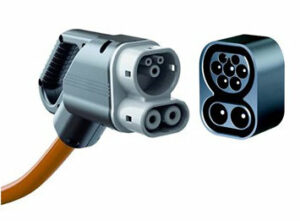
| Charging Point | Max. Power | Avg. Power | Time | Rate |
| CCS (50 kW DC) | 50 kW | 40 kW | 43 min | 220 km/h |
| CCS (100 kW DC) | 50 kW | 40 kW | 43 min | 220 km/h |
| CCS (150 kW DC) | 50 kW | 40 kW | 43 min | 220 km/h |
| Brand | Kia |
| Model | e-Soul 39 kWh |
| Body Style | SUV |
| Car Engine | electric |
| Motor power | 100 |
| Maximum Torque, Nm | 395 |
| Battery Energy, kWh | 42.0 |
| Power reserve (NEDC/EPA/WLTP), km | - / - / 230 |
| Level Charging (230/400/DC), hours | - / 4.15 / 0.43 |
| Electrical Acceleration, 0-100 km/h (0-62.1 mph) in sec | 9.9 |
| Top Speed, km/h | 157 |





